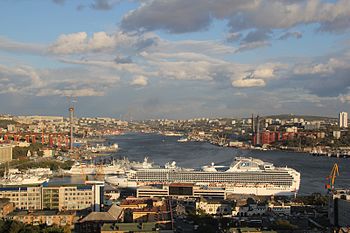Tuesday, April 5, 2011
Lapu-Lapu
Lapu-Lapu City is a first class highly-urbanized city in the province of Cebu in the Philippines. The city occupies most of Mactan Island, a few kilometer off the main island of Cebu and also covers the area of Olango Island further to the southeast region, plus a few other islands. It is part of the Cebu Metropolitan Area which is located in Cebu City. According to the 2007 census, it has a population of about 292,530 people.
The city is linked to Mandaue City on mainland Cebu by the Mactan-Mandaue Bridge and Marcelo Fernan Bridge. Mactan-Cebu International Airport, the second busiest airport in the Philippines, is located in Lapu-Lapu City. The only aquarium attraction in the Visayas is also located in Lapu-lapu City.
In the 16th century Mactan Island was colonized by Spain. Augustinians friars founded the town of Opon in 1730 and became a city in 1961 and was renamed after Datu Lapu-Lapu, a Muslim king who defeated Portuguese explorer Ferdinand Magellan in 1521. This battle is commemorated at the Lapu-Lapu shrine in Punta Enga?
Politician Manuel A. Zosa, the representative of the Sixth District of Cebu, sponsored the Bill converting the former municipality of Opon into the present day City of Lapu-Lapu. This was the Republic Act 3134, known as the City Charter of Lapu-Lapu which was signed on June 17, 1961 by former Philippine President Carlos P. Garcia.
OFFICIAL DETAILS:
City Head: Paz Corro Radaza
City Classification: Highly Urbanized City
City Population: 292,530
City Land Area: 5,035 sq. km.
Website: http://www.lapulapucity.gov.ph























